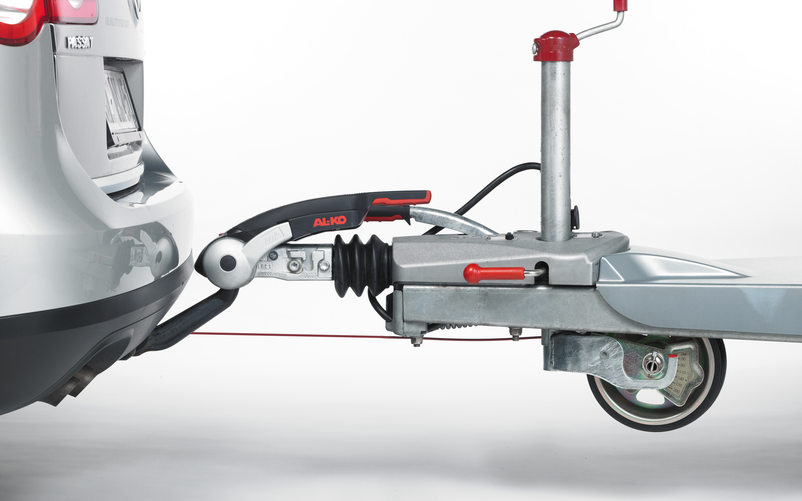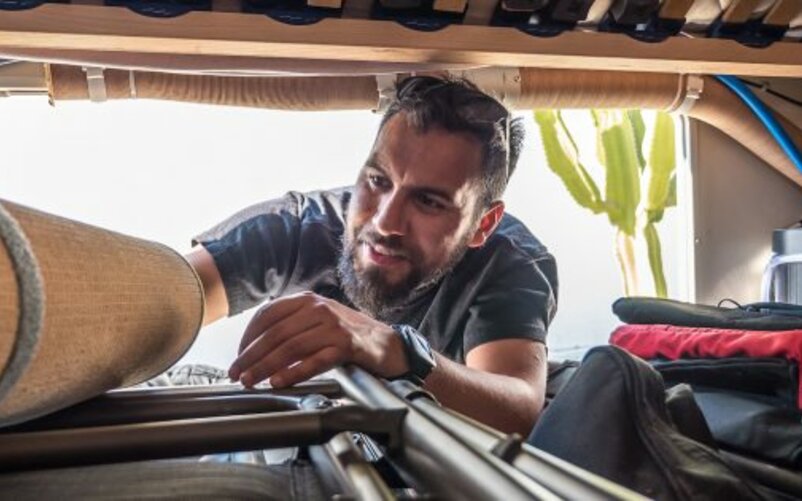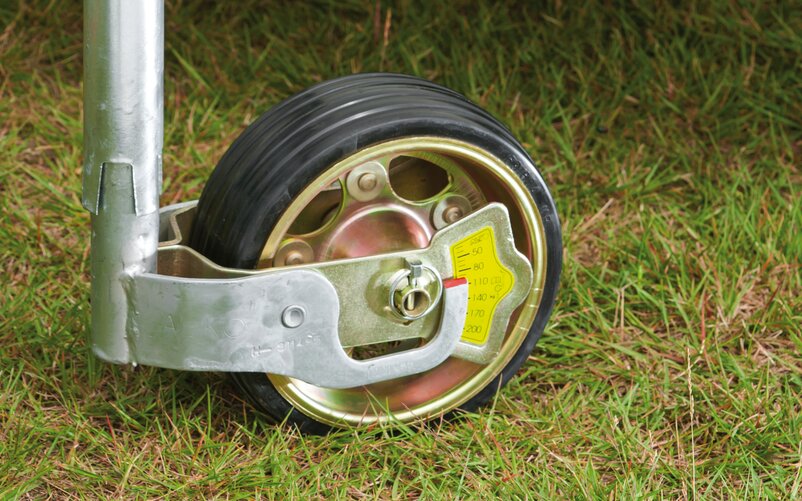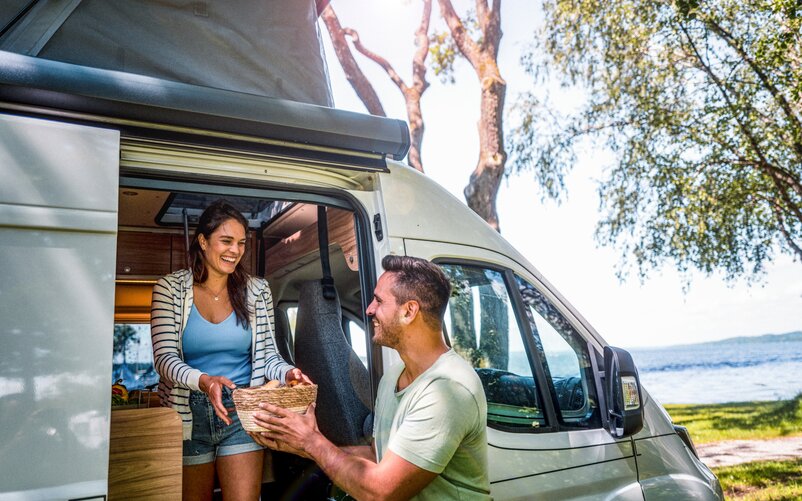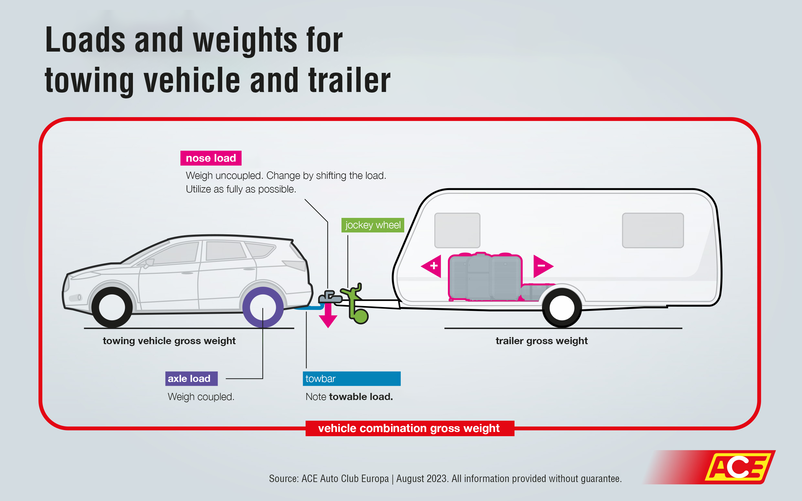Loading your camping vehicle correctly
Safety for you and other road users – that’s what correct loading is all about. Of course, driving comfort, fuel consumption and technical limits also play a role. But ultimately these come second place to the main goal: driving safety.
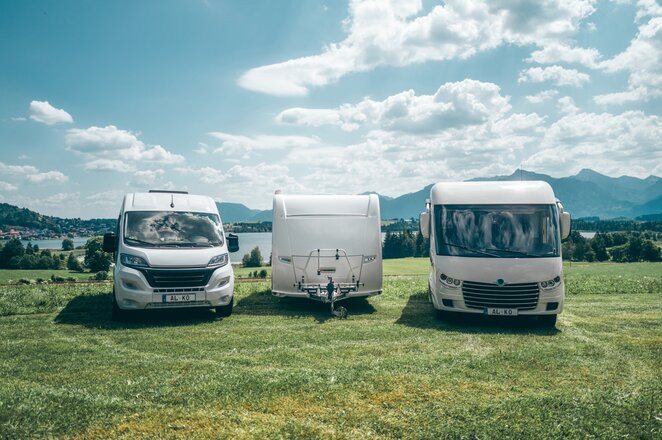
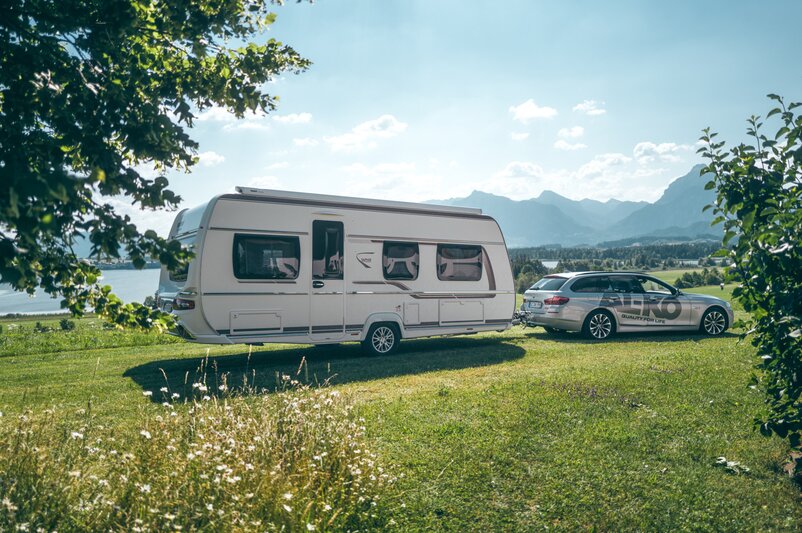
The most important points in brief
- Weight and weight distribution are the key factors for a safe drive
- Tips for correct loading and reducing weight
- Terms explained in brief – from axle load to permitted gross weight
Why correct loading is important
The decisive factors for correct loading are weight and weight distribution. Both too much weight and too little can negatively impact driving response. If the two factors are correctly balanced, you have done everything right. But how does this work and what can happen if it doesn’t?
Important factors for vans and motorhomes
Regardless of their size, most camping vehicles offer plenty of storage space in the back – whether under the campervan beds or in the motorhome’s rear garage. At the same time, the payload weight is limited, especially for models with a gross weight of up to 3.5 metric tons. This combination of potential overloading and the concentration of weight in the rear can lead to a potential danger if the vehicle is loaded carelessly.
The special features of caravans
With caravans, there is an additional factor: the risk of swaying, rocking or even tipping over while travelling. If the trailer is overloaded, underloaded or incorrectly loaded, this can lead to driving problems even at moderate speeds. In addition to the load, you should keep to a moderate driving speed, especially when cornering and on winding roads, and beware of gusts or dangerous winds on bridges. Technical equipment such as an anti-sway coupling support comfortable, safe driving. If an emergency arises, reduce your speed immediately without braking too hard!
Correct loading: Our top 7 tips
Correct loading means neither overloading nor underloading, and distributing the weight sensibly:
- Comply with the specified weight limits.
- If possible, stow heavy loads low down and around the axles in the camping vehicle.
- Store moderately heavy items such as shoes, kitchen utensils or food supplies in the storage spaces near the floor or in the lower cabinets.
- Use the upper compartments to transport lightweight items such as clothing and light camping crockery.
- Secure the load so that nothing can fly about in the vehicle and become a dangerous projectile during braking maneuvers – i.e., place loose objects in storage compartments and/or lash them down.
- Pets traveling with you must be safely restrained just like human passengers during the journey. This is because dogs and cats are considered cargo under German law. Transport boxes, securely installed dog crates, or a belt and harness to buckle them in are all suitable options.
- To be on the safe side, weigh the camping vehicle when it is fully loaded.
How to weigh your camping vehicle
There are various options for weighing your camper. If you don’t have your own weighing machine, you can ask external organizations such as the ADAC (General German Automobile Club), TÜV (Germany’s Technical Inspection Association), haulage companies or waste disposal sites if you can drive your camper onto their scales.
Specialist camping retailers also sell small portable scales that can be placed under the wheels or otherwise used to determine the nose load. The AL-KO jockey wheel with load indicator, which comes with a built-in weighing function, makes the process even more comfortable for caravan owners. You can find it in our online store.
What to do in the event of overloading
How to reduce weight
No matter how you check your camping vehicle’s weight, if it turns out that the permissible gross weight has been exceeded, there is only one thing to do: reduce the load. Otherwise you might have to throw away your equipment in the containers provided on site during an inspection, or else be prohibited from continuing your journey if your vehicle is overloaded.
The following are effective ways of reducing weight:
- Do not drive with a full water tank – drain both fresh and dirty water and fill up on arrival.
- Use aluminum gas cylinders – they are more than half the unladen weight of steel cylinders.
- Pack kitchen equipment and crockery made of lightweight materials.
- Choose your clothes and shoes carefully, and don’t overdo the “just-in-case” items.
- Avoid luxury items as much as possible, like food processors, extra camping furniture, heavy barbecues and lots of books.
- Cosmetics such as shower gel, shampoo, body lotion etc. can also pile on the weight.
Penalties for incorrect securing and overloading
Germany’s road traffic regulations (StVO) stipulate a fine as a sanction for overloading as well as points in the driving offenders’ record in Flensburg. The measures increase in severity depending on how far the permitted weight is exceeded. In Germany, there is a 2 % tolerance for vehicles over 7.5 tons and a 5% tolerance for vehicles up to 7.5 tons. Stricter rules may apply in other countries. You can find more details in our article on ‘Fines for overloading’.
You may also be fined for improperly secured items: Distinctions are made here between inadequately securing the load against falling, endangerment, and damage to property. The fines range from € 35 to € 75 and one point.
Unladen weight
- Information in the Certificate of Approval Part 1 (vehicle registration document) under point G
The unladen weight of a camping vehicle indicates the mass of the motorhome or caravan in roadworthy condition. This includes the additional equipment installed by the manufacturer, a 90 percent full tank, a full gas cylinder, as well as full freshwater and toilet flush water tanks. This definition should be critically examined, as the manufacturers’ calculations often vary. Some also use a driver weight of 75 kilograms as a basis. It is therefore best to weigh it yourself and calculate the payload from this baseline value.
Permitted gross weight (perm. GVW)
- Information in the Certificate of Approval Part 1 (vehicle registration document) under point F.1
The permitted gross weight of a van, motorhome or caravan is referred to as the permitted gross weight. It is the maximum weight, including all objects and equipment, that may be reached when driving in road traffic. The gross weight of a vehicle combination is calculated from the sum of the towing vehicle’s perm. GVW + the caravan’s perm. GVW = the vehicle combination’s perm. GVW.
Payload and payload increase
The payload is the difference between the permitted gross weight of the camping vehicle and its unladen weight.
- Example: Payload = 3,500 kg (perm. GVW) – 3,000 kg (unladen weight) = 500 kg
If you cannot get by with your caravan’s payload, it is worth thinking about a payload increase. Increasing the payload of your caravan increases the permitted gross weight so you can bring more equipment or install additional equipment. You can find everything you need to know about a payload increase for your caravan, including a checklist for the initial request, on our website.
Axle load
- Information in the Certificate of Approval Part 1 under item 8
The axle load indicates how much weight rests on the axle(s) and is transferred to the road surface. This information applies equally to vans, motorhomes, caravans and towing vehicles.
Tire load index
- Information can be read in the code on the tire wall (additional information on tire size, width, rim diameter, speed index)
The load index (LI, also: load capacity) indicates a tire’s load capacity. Each LI value corresponds to a specific tire load capacity at a specified air pressure of 2.5 bar. The load capacity of the tires must not be exceeded to ensure safe driving. It also makes sense to keep an eye on the age of the tires.
- Example: The tire marking is: 225/65 R16 91 CP 109 Q, where 109 indicates your tire’s load index. It states that the tire can carry up to 1,030 kg. There are tables online for decoding the load index.
Nose load
- Information in the Certificate of Approval Part 1 under point 13
This number relates to the towing vehicle in a vehicle combination and describes the weight of the caravan’s drawbar pulling on the ball head of the towing vehicle’s towbar. The nose load can be measured using a nose load scale or an integrated scale on the jockey wheel. It can be calculated using the following formula:
- Nose load = (Maximum towing vehicle’s nose load x drawbar length) / Distance from axle center to jockey wheel center
Towable load
- Information in the Certificate of Approval Part 1 under point O
The towable load (also: tensile load) relates to the towing vehicle and indicates how much weight it can pull. This weight depends on the vehicle model and the towbar, among other things, and is usually between 1,500 kilograms and 4,500 kilograms for large off-road vehicles.
